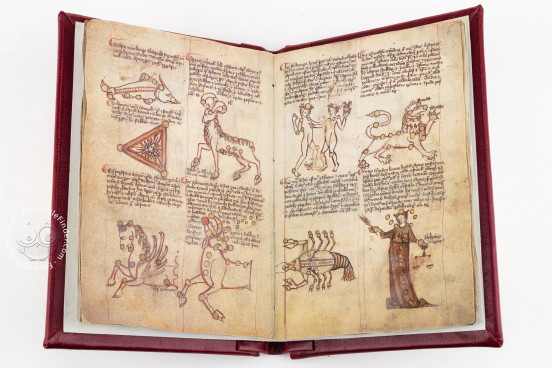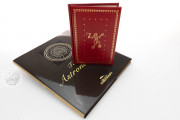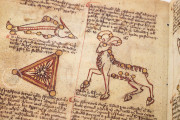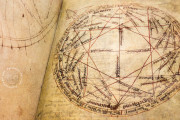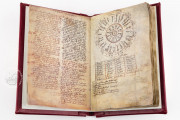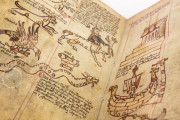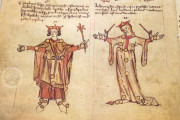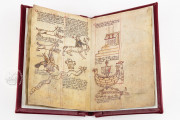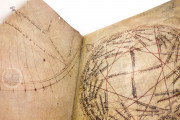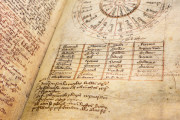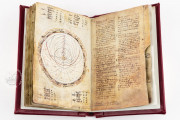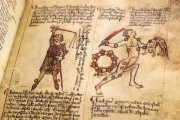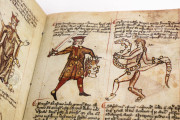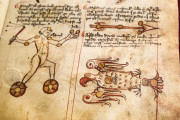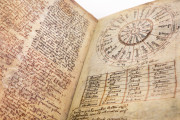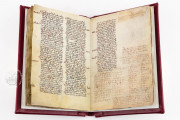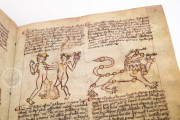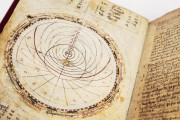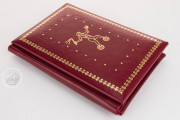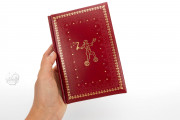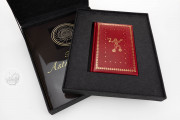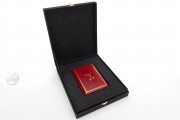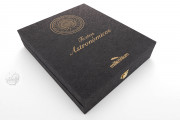The manuscript MS Lat. Oct. 44 of the Berlin National Library, catalogued as "Codice di testi astronomico-astrologici, Francia (?)" is a compendium of classical astronomy and astrology believed to have been compiled and illustrated during the second half of the fourteenth century in France or in Flanders by an unknown author, who was most certainly well-versed in the subject of science as well as in its popular use in that era. The lack of a bibliographical or antique reference means that it is hard to establish the exact source of the manuscript.
As far as its positioning in the National Library is concerned, however, it is believed to have belonged to Prince Frederick William of Prussia and to have lived through all the German historical landmarks, starting from the Peace Treaty of Westphalia leading up to the reunification of Germany, finally reaching its current Berlin resting place in 1997.
The astronomical manuscript of Berlin is composed of twelve folios, that correspond to twenty-four pages, forming a six-folio booklet in a 11 x 15.5 cm format. The writing is Gothic script. The parchments represent forty-three colored drawings showing the quadrant for determining celestial orientation, the signs of the zodiac and astrological houses, the hours and days of the week with an almanac, the names of the Ptolomaic stars and constellations, tables of the months with an indication of celestial and atmospherical phenomenons and, lastly, an astrolabe.
Knowledge of the firmament, identification of celestial bodies and their supposed effect on individuals' lives have been an object of study since the beginning of time. This knowledge is rooted in oriental culture, and therefore treated with great scientific rigor by the Greeks and the Romans.
Some authors’ names are still known, and fragments of works that reveal doctrines forged over the centuries have been preserved.
In ancient times it was believed that heroes and famous personalities were transported to the heavens upon their death, and converted into constellations, so that, looking up to the sky, their figure could be recognized by the position of the stars.
This collection of astronomical texts contains a series of illustrations that form part of the "Aratea" program, which contains forty-three drawings representing planets, stars and constellations, as well as various schematic treatises.
We have 1 facsimile edition of the manuscript "Berlin Hyginus": Textos Astronómicos facsimile edition, published by Millennium Liber, 2007
Request Info / Price
